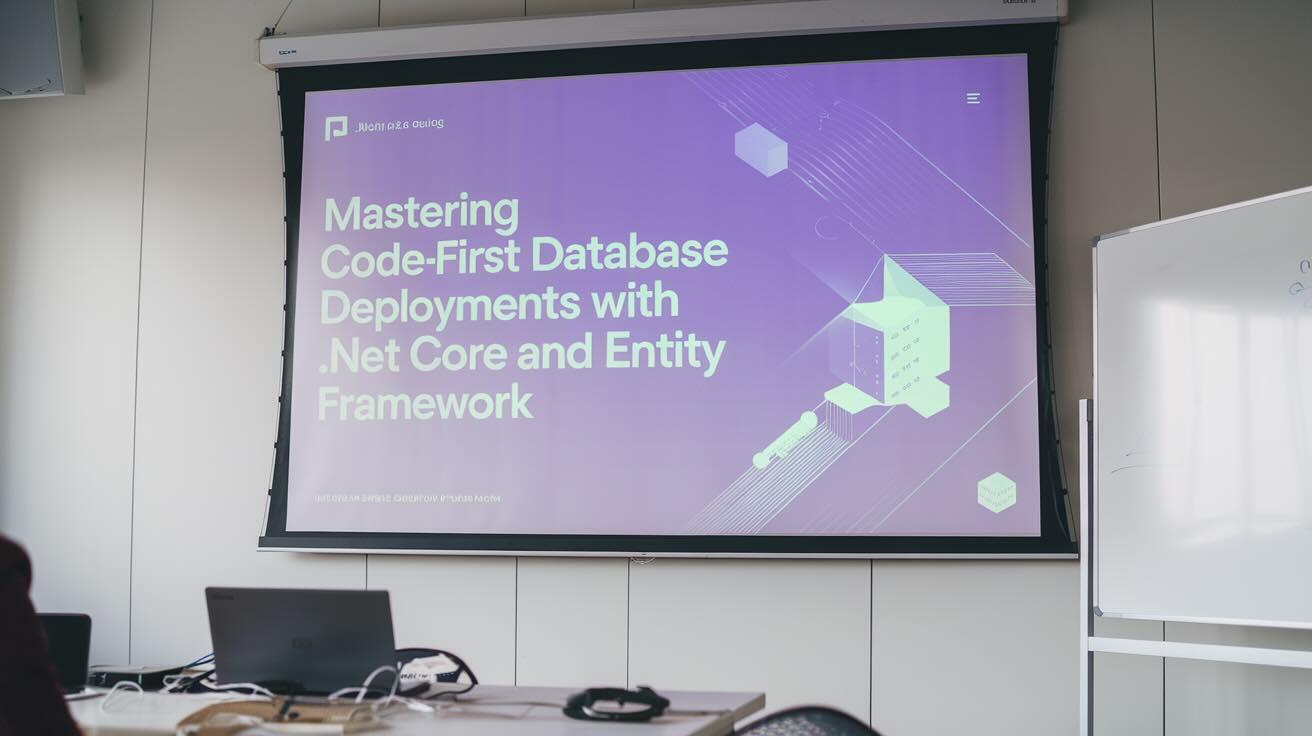Introduction to Code-First Development
In modern software development, the way we approach database design has transformed dramatically. Gone are the days of manually creating database schemas and struggling with complex database migrations. Enter the code-first approach with Entity Framework Core – a game-changing methodology that puts developers in complete control of their database structure.
What Exactly is Code-First Development?
The Fundamental Concept
Code-first development is a paradigm where your database schema is derived directly from your application's code. Instead of designing database tables first, you write C# classes that represent your data model, and Entity Framework handles the database creation and management.
A Practical Example
public class Product
{
public int Id { get; set; }
public string Name { get; set; }
public decimal Price { get; set; }
public DateTime CreatedAt { get; set; }
// Relationships
public Category Category { get; set; }
public List<OrderItem> OrderItems { get; set; }
}
public class Category
{
public int Id { get; set; }
public string Name { get; set; }
public string Description { get; set; }
}
Why Choose Code-First Approach?
Key Advantages
1- Seamless Development Workflow
- Write database structure as part of your code
- Leverage strong typing and compile-time checks
- Easier version control and collaboration
2- Flexibility and Maintainability
- Quickly iterate on data models
- Automatic schema updates
- Consistent across different database providers
Migrations: The Heart of Code-First Development
Creating and Managing Migrations
# Create initial migration
dotnet ef migrations add InitialCreate
# Update database
dotnet ef database update
# Create additional migration
dotnet ef migrations add AddProductCategory
Migration Best Practices
- Use descriptive migration names
- Review migration files before applying
- Keep migrations small and focused
Deployment Strategies with DeployHQ
Comprehensive Deployment Workflow
1- Preparation
- Commit migration files to version control
- Ensure consistent environment configurations
2- Deployment Script Example
#!/bin/bash
# deploy_database.sh
# Backup current database (optional), assuming postgres db
pg_dump database_name > backup_$(date +%Y%m%d).sql
# Apply Entity Framework migrations
dotnet ef database update
# Run additional deployment tasks
dotnet publish -c Release
Advanced Deployment Configurations
Environment-Specific Migrations
public class Startup
{
public void ConfigureServices(IServiceCollection services)
{
services.AddDbContext<ApplicationDbContext>(options =>
options.UseSqlServer(Configuration.GetConnectionString("DefaultConnection")));
}
}
Security and Performance Considerations
Database Security
- Use environment variables for connection strings
- Implement least-privilege database users
- Utilize Azure Key Vault or similar secret management
Performance Optimization
- Use database indexes strategically
- Implement efficient migration strategies
- Monitor and profile database operations
Common Challenges and Solutions
Handling Complex Migrations
public partial class ComplexDataMigration : Migration
{
protected override void Up(MigrationBuilder migrationBuilder)
{
// Custom data transformation logic
migrationBuilder.Sql(@"
UPDATE Products
SET Price = Price * 1.1
WHERE Category = 'Electronics'
");
}
}
Specially interesting when we have complex scenarios, or if we need to do some specific things in the database side, like dropping a index, changing a data type or things like that.
Integration with CI/CD Pipelines
Automated Deployment Workflow
- Code commit
- Automated testing
- Database migration
- Application deployment
- Verification
Tools and Ecosystem
Recommended Tools
- Visual Studio or VS Code
- DeployHQ for automated deployments
Conclusion
The code-first approach with Entity Framework Core represents a powerful paradigm in modern .NET development. By leveraging DeployHQ's deployment capabilities, developers can create robust, maintainable database-driven applications with unprecedented ease.
